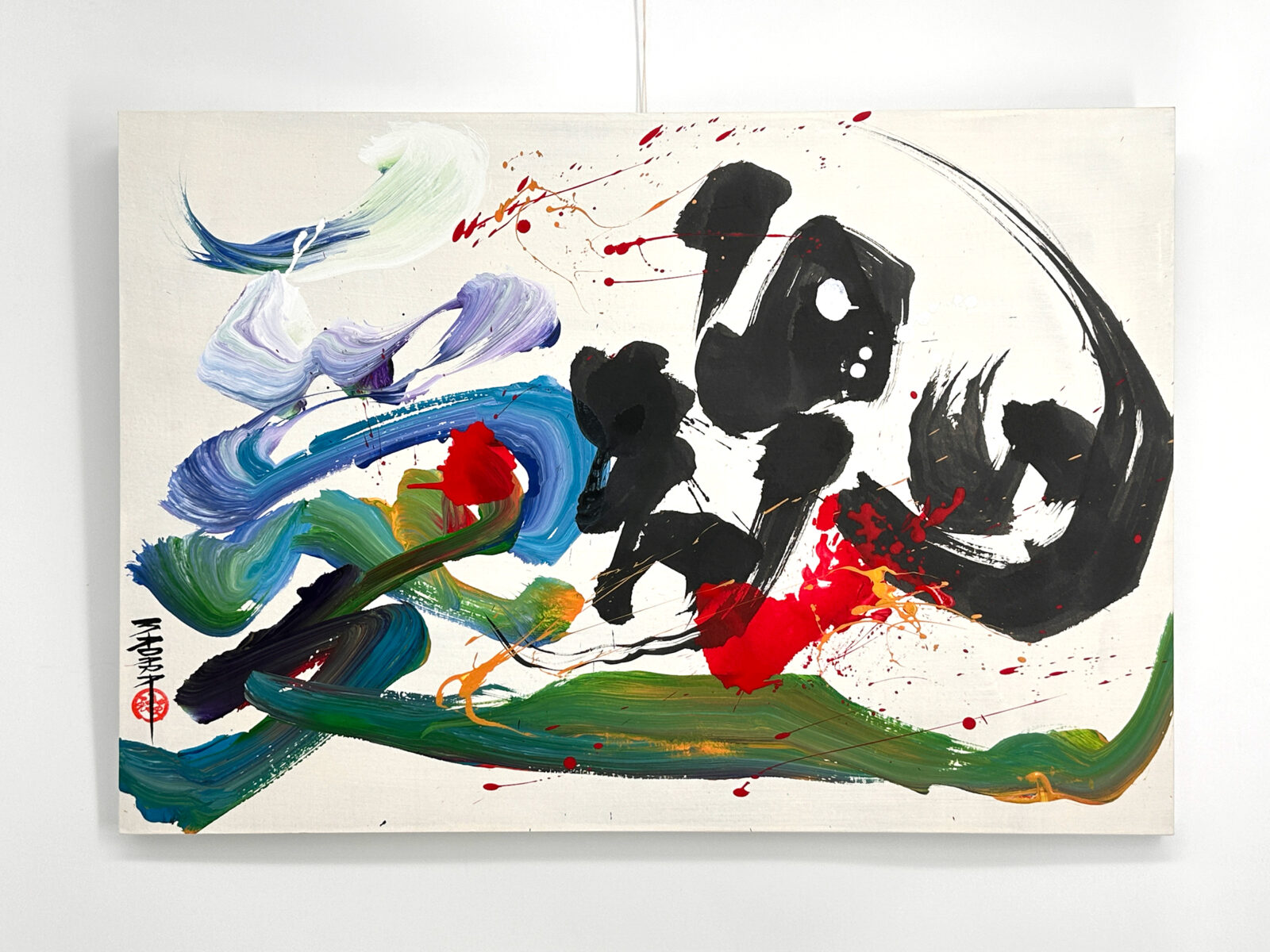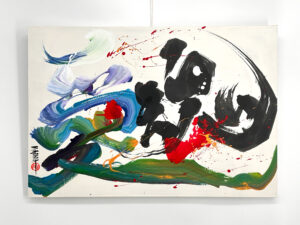Image of the work
You can enlarge the photo by tapping on it.
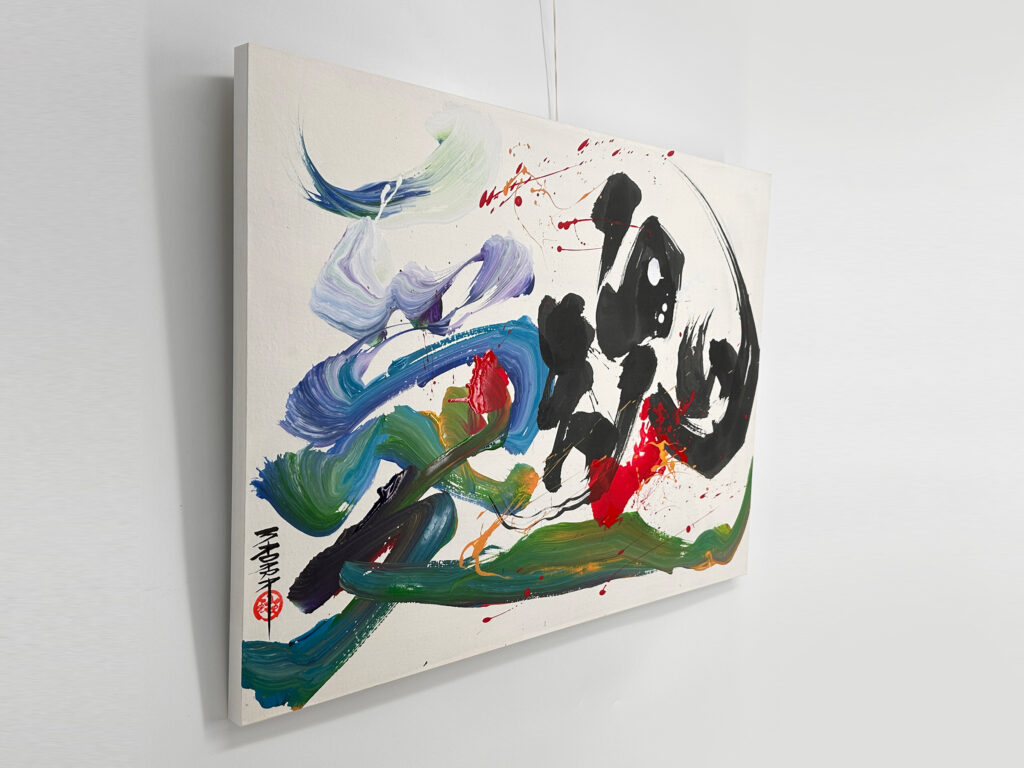
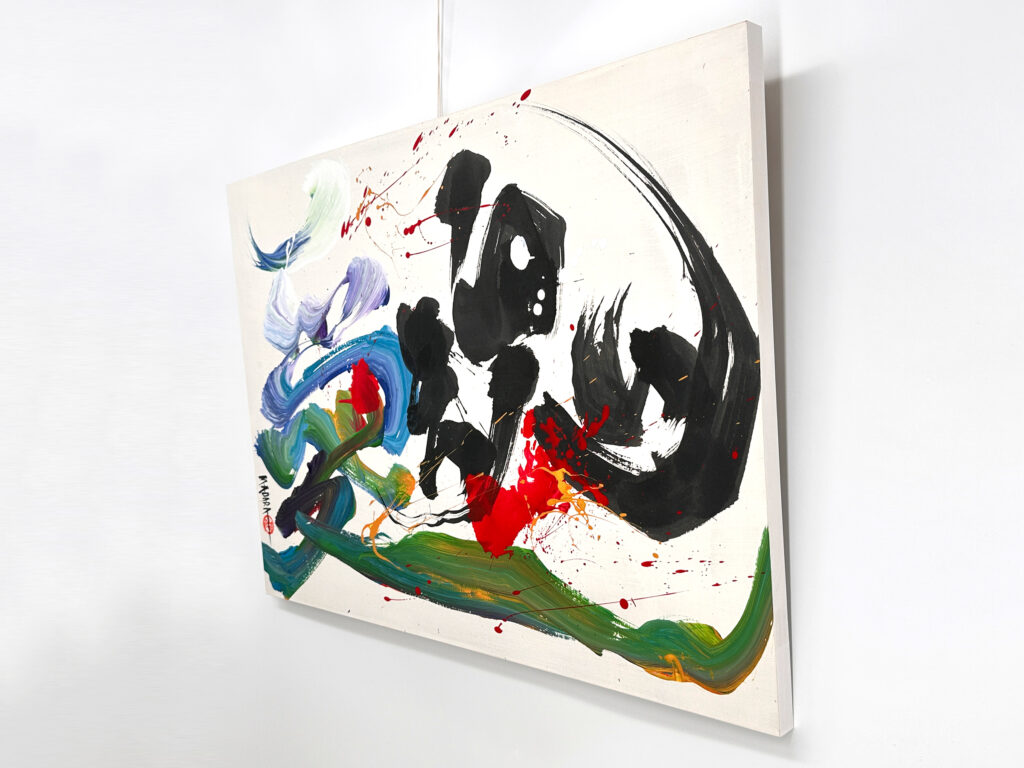
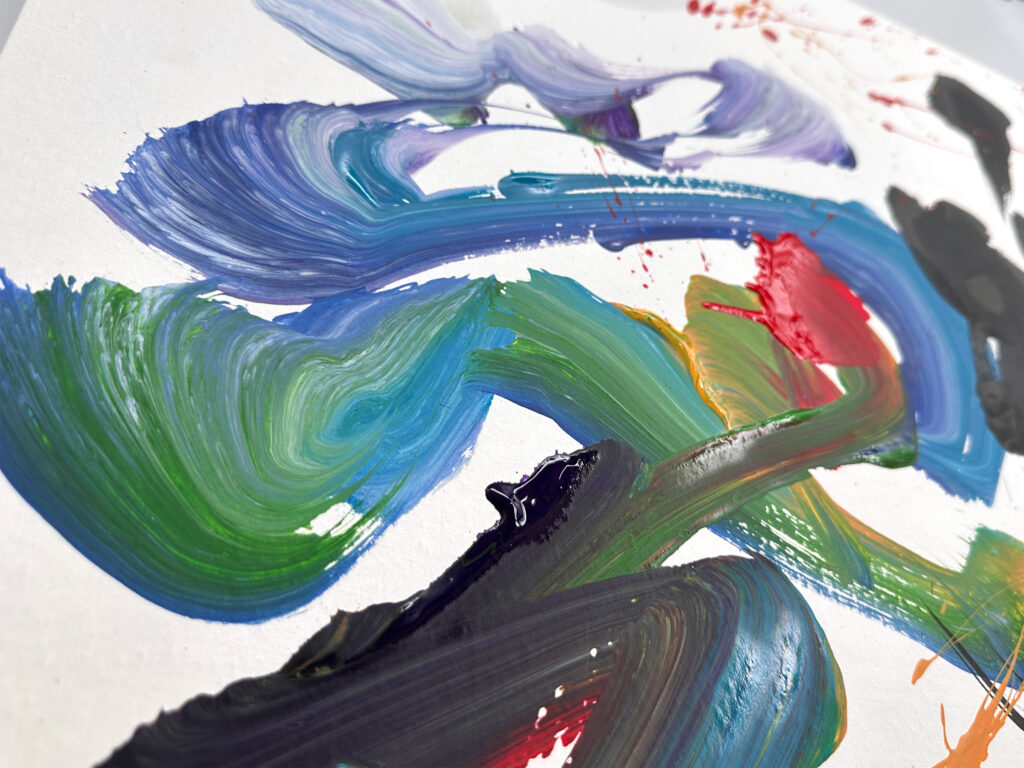
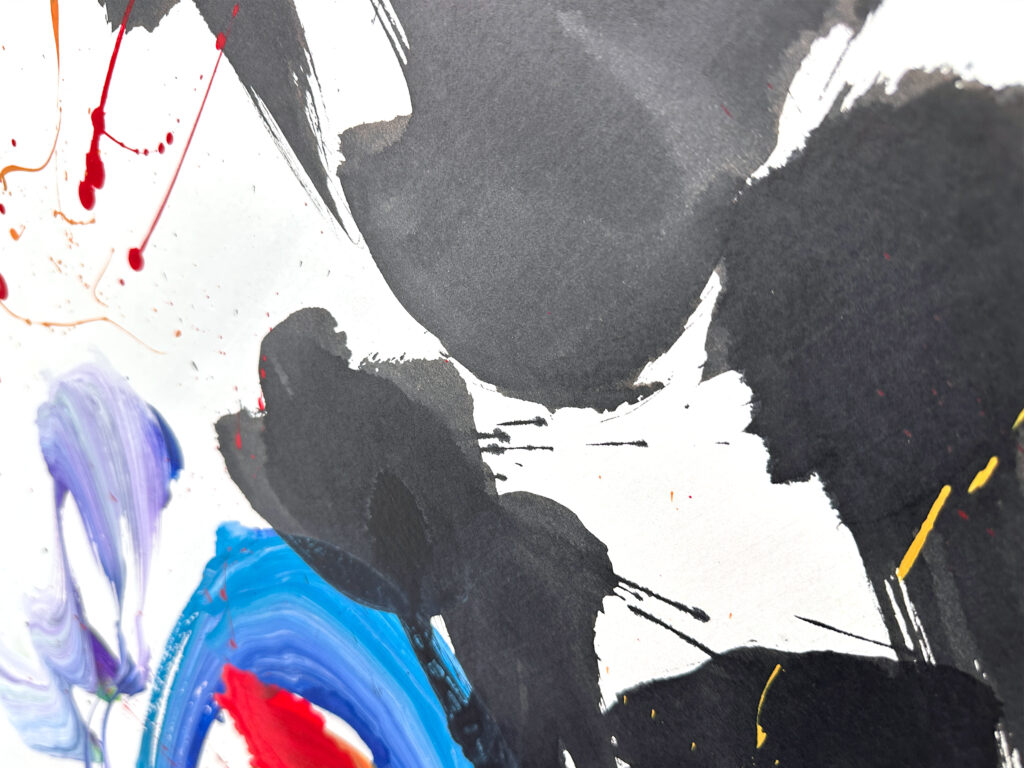
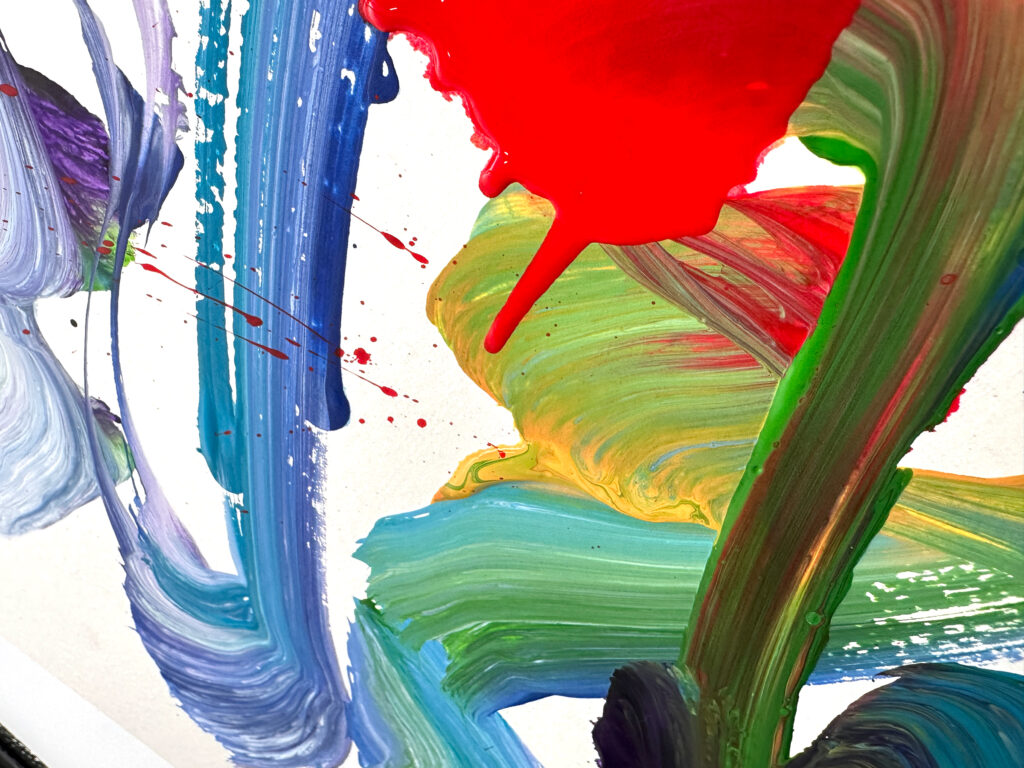
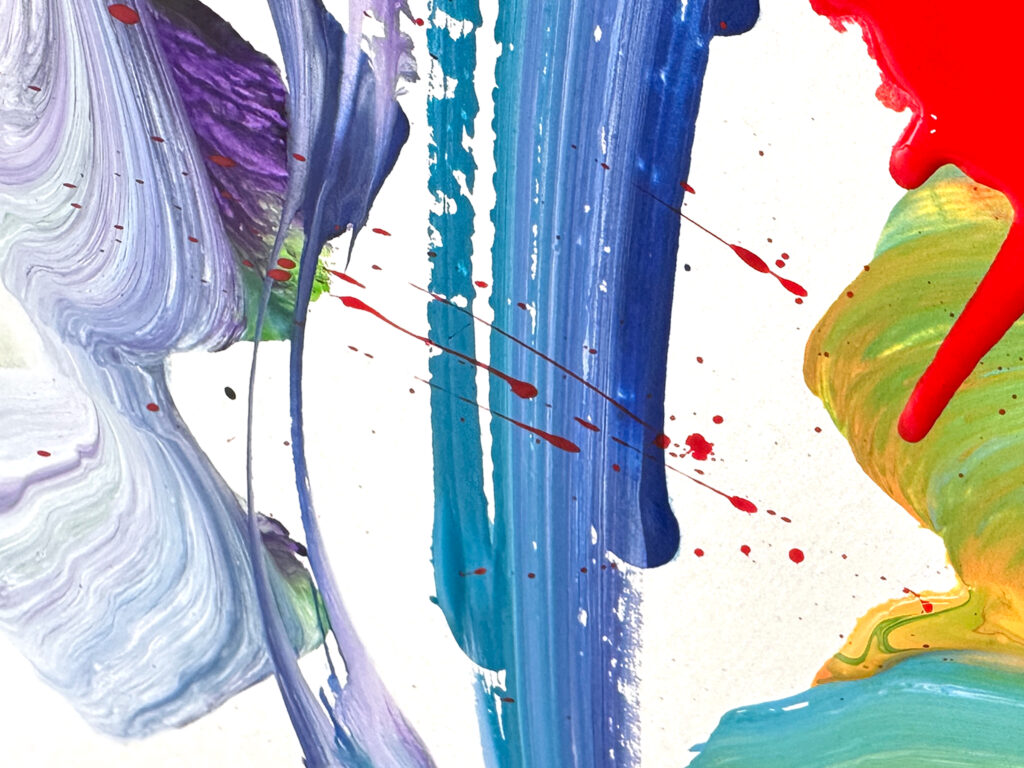
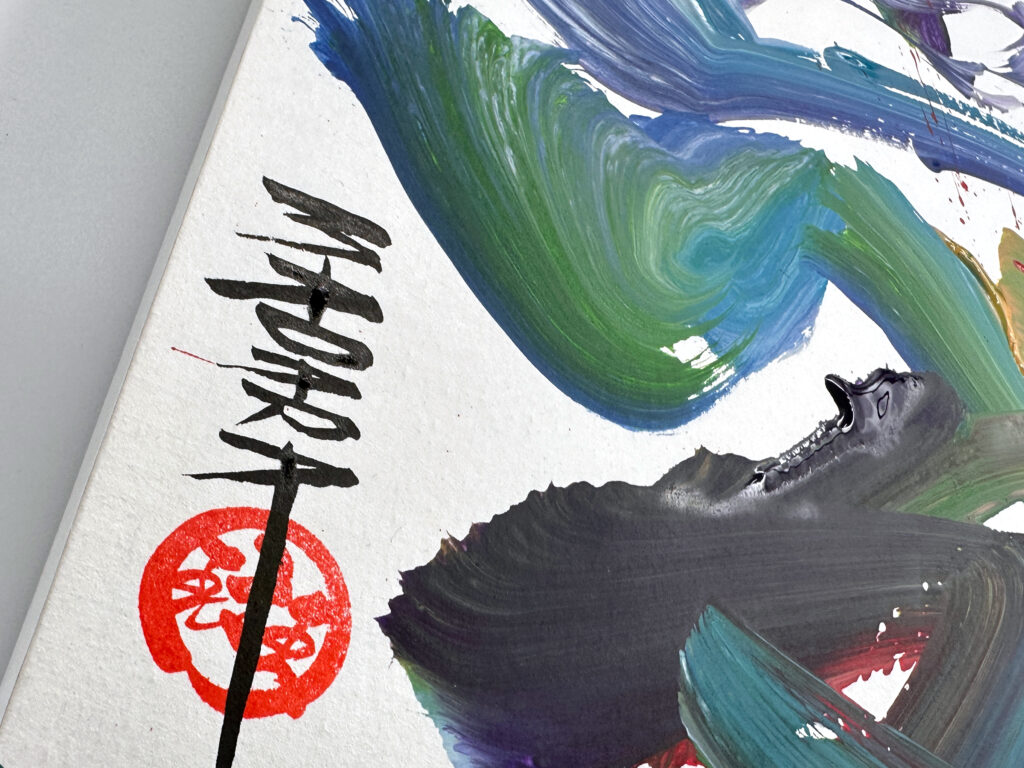
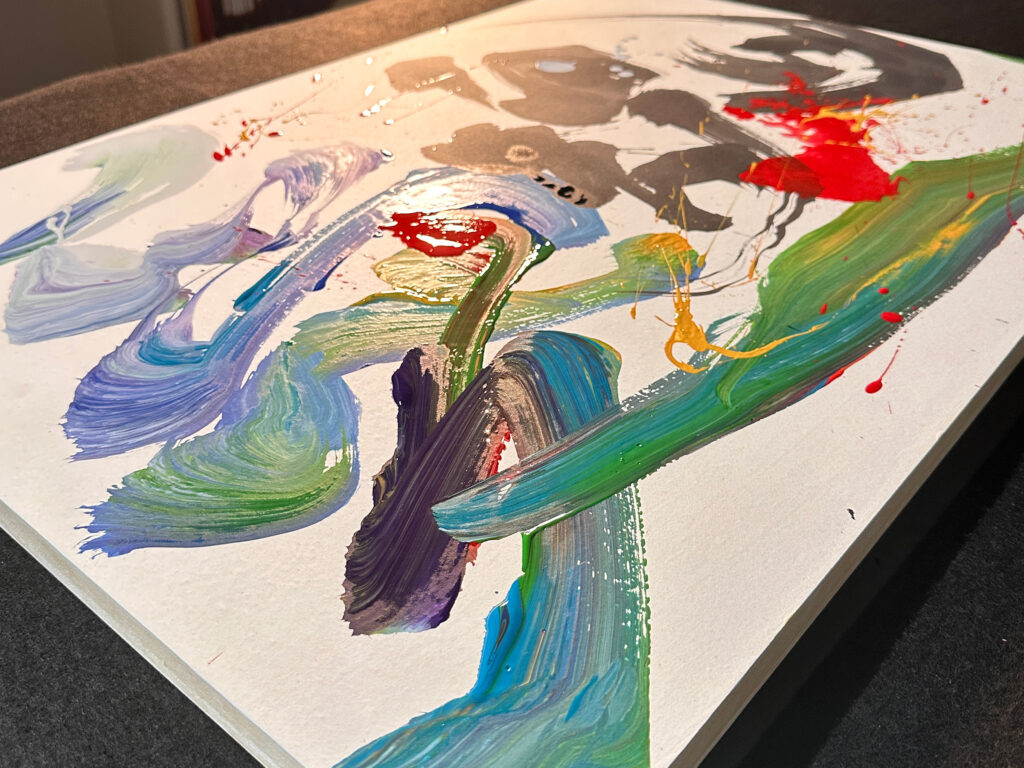
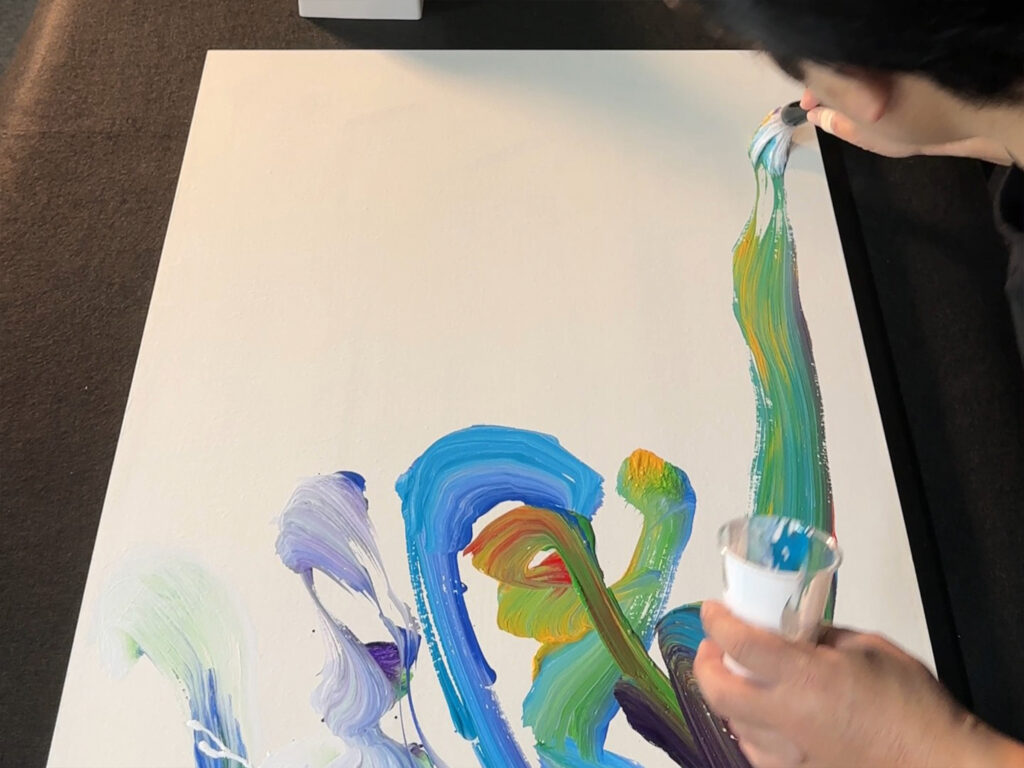
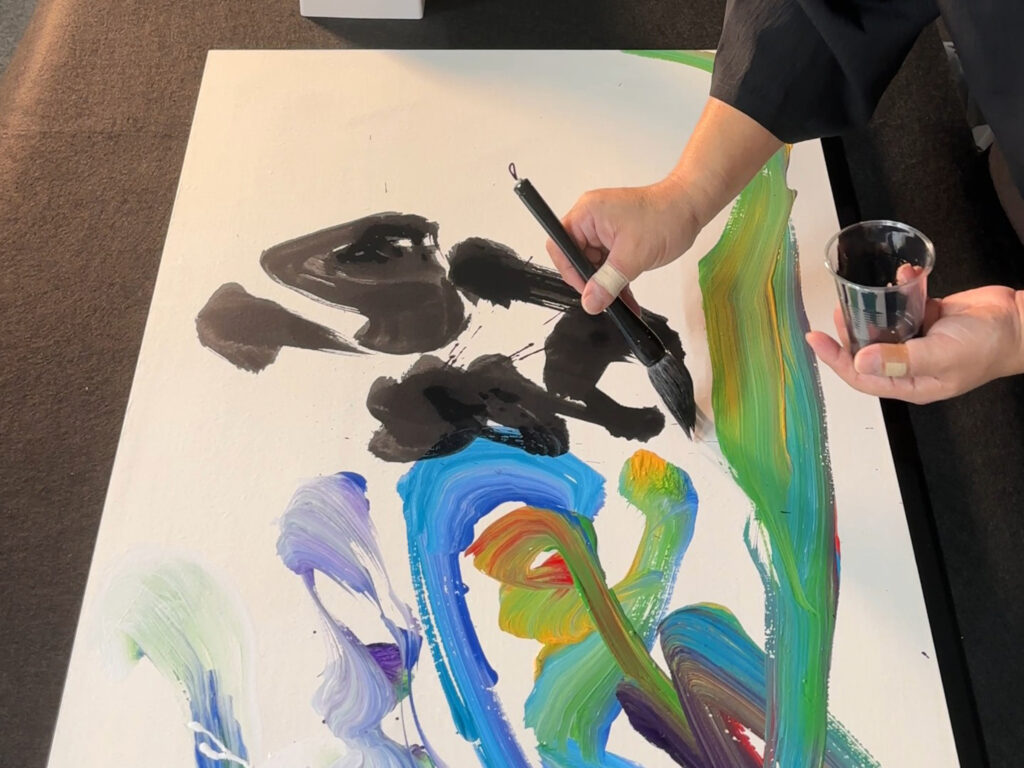
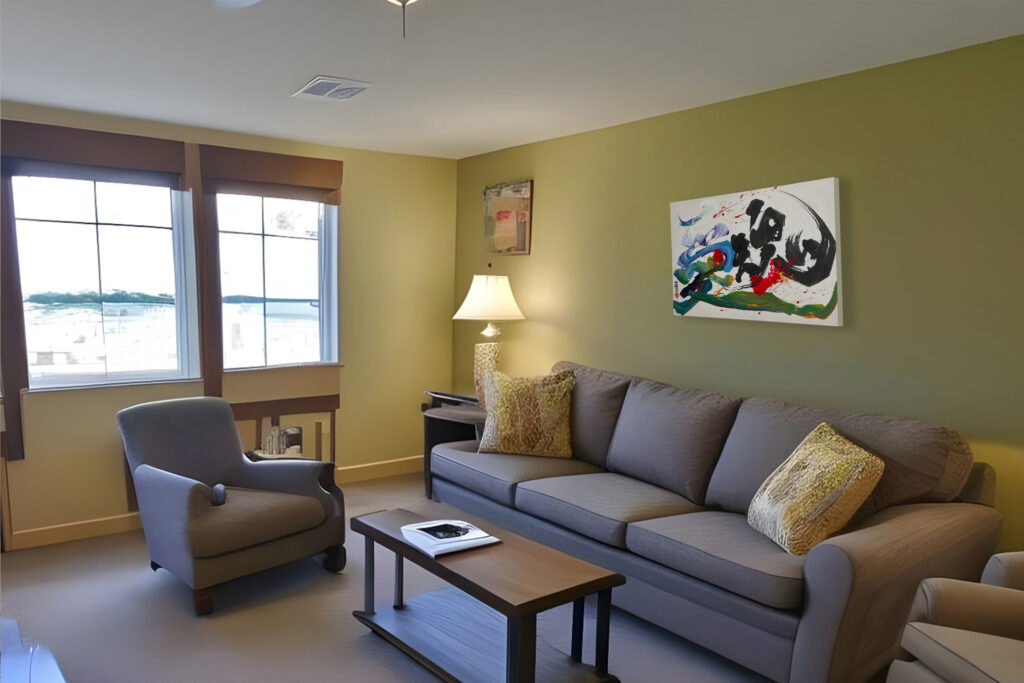
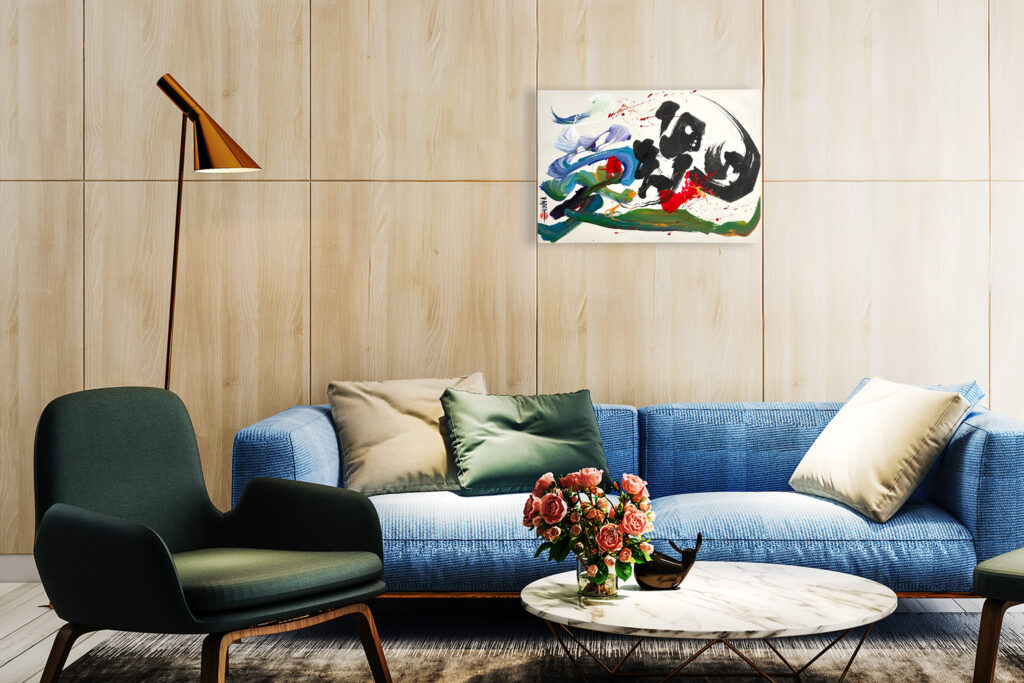
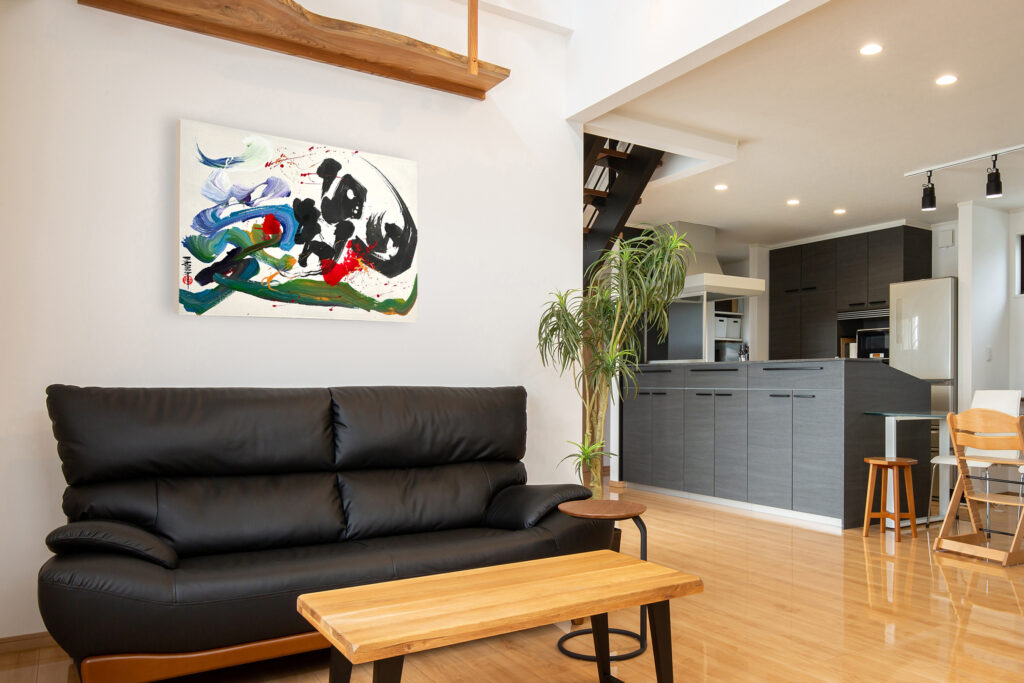
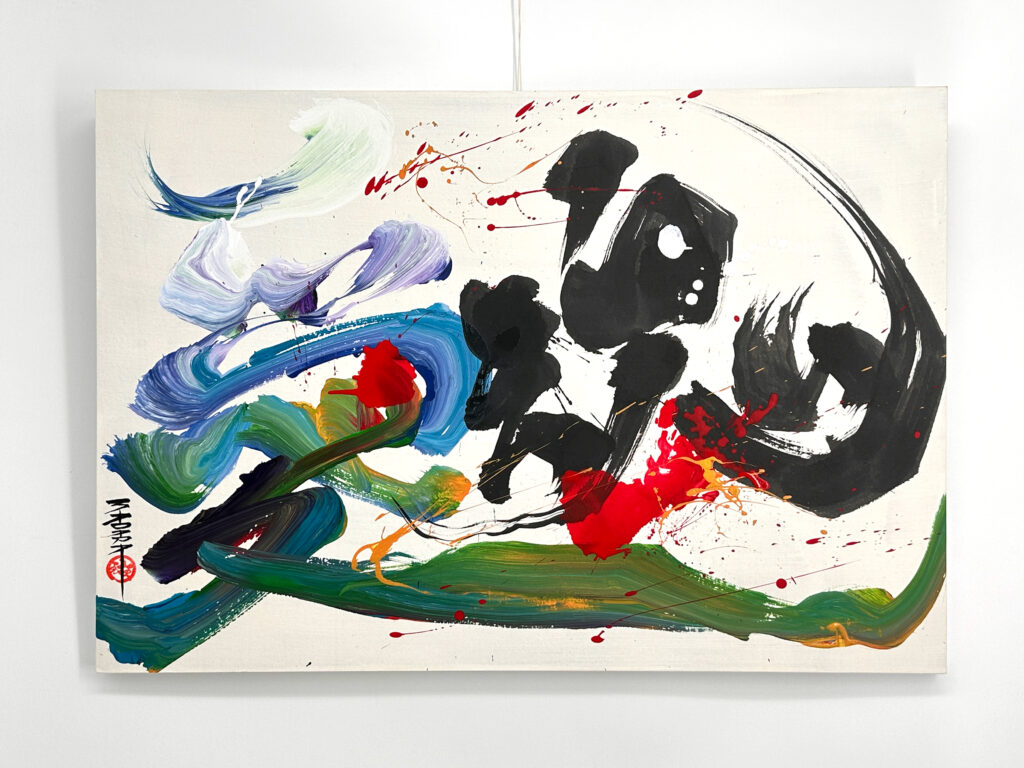
The worldview of the work
愛魂 (Aikon) – A Record of Prayer and Rebirth
by MADARA
I titled this work “Aikon,” the fusion of Ai (Love) and Kon (Soul).
It is a record of the moment when the theme of love, which has long breathed within me, ascended to a new dimension—tempered by loss, silence, and prayer.
Love has always been the center of my creation.
Yet in this work, love is no longer a gentle feeling or a human emotion.
It is the resonance of life itself—the pulse that dwells within all living things.
On the day of the great earthquake, I was living an ordinary day, unaware that life could be divided so sharply between “before” and “after.”
Amid collapsing houses and the approaching waves, I ran through the chaos searching for my son, guided only by instinct and prayer.
In those moments of fear, I understood both the fragility of life and the strength of love.
Later, surrounded by silence, I lived with the memory of those I lost, and the weight of what could never be recovered.
There were years when I could no longer paint, when even holding a brush felt unbearable.
But deep within that silence, a faint light continued to flicker—
a voice whispering that love still existed, even in the ruins of memory.
When that whisper took form, this work, Aikon, was born.
At the beginning of the creation, I felt a tremor deep inside my chest.
It was the same vibration that had accompanied me since the disaster—the movement of the soul itself.
It cried, raged, prayed, and finally, it began to breathe again.
That movement could not be expressed in words or sound.
It was a presence that could only be felt through color.
Blue became prayer.
Green became life.
Purple became memory.
Red became heartbeat.
Together they intertwined, forming one living being.
That being was Aikon—a soul reborn through love.
The first stroke I laid was blue, flowing out of pure white.
It was transparent, serene, yet filled with a profound vibration of prayer,
like the stillness of the sky after the storm, when silence carries both sorrow and hope.
I layered green upon it—the breath of the earth, the scent of renewal.
Over that, I placed red, a color that trembles like the pulse of life itself.
It is both pain and vitality, a living flame that refuses to fade.
And at the heart of this work lies black—ink.
Black is not darkness; it is the shadow that gives form to light, the space where the soul rests.
Through the method of Hisseki-jutsu, I entrusted everything to a single moment.
When the brush touches the canvas, I no longer think.
Love holds the brush.
The soul draws the line.
In that instant, I cease to be the creator and become the vessel through which the unseen moves.
When the ink dries, delicate tremors appear—
like the moment when grief begins to turn into light.
Red seeps into black, melts, and merges,
becoming a single pulse of life.
The ink and crimson together embody the coexistence of death and birth, stillness and movement, shadow and prayer.
This is my requiem for those lost, and my blessing for those who continue to live.
To me, Aikon is where “the pain of love” and “the hope of the soul” breathe together.
To love is not only to embrace; it is also to endure, to forgive, to pray, and sometimes to let go.
Even after all that, we choose love again.
This work is a testament to that will—to keep choosing love, again and again.
Each color carries a rhythm.
Blue plays silence, green breathes comfort, purple whispers memory, and red beats as the heart.
These tones unite into one melody,
and at its center, the black ink stands quietly, binding all into harmony.
Ink is truth in silence—a language beyond words.
Through my calligraphy, I wish to reach where words cannot.
The bold strokes of black are the “core of the soul.”
They have no defined shape, yet they are alive.
When I lifted my brush, a subtle vibration arose from the center of the canvas—
the faint presence of a love not yet seen, but deeply felt.
Aikon is not merely a painting.
It is my prayer, my proof of rebirth.
After the earthquake, after the loss, and after years of silence,
I chose once more to create.
Through that act, I came to understand:
Love is not something we hold. It is the act of being alive.
The layers of color resemble the strata of life itself—
light enters through the cracks, shadows dwell beside it,
and in that meeting, a form of prayer is born.
Before this work, I hope the viewer feels a quiet light awaken within:
a tenderness toward others,
and a calm forgiveness toward oneself.
From each angle, the colors shift,
just as love appears differently to every heart.
Yet beneath every difference lies the same trembling of the soul.
Aikon is a breath released into the world—
a new kind of calligraphy, beyond writing or painting.
It is the embodiment of my belief in “Art as Prayer.”
The brush is not a tool but a vessel of the heart.
Love flows, the soul dances, and silence returns.
Each of these moments is my life—and my love.
When I finished this work, I exhaled deeply.
And in that breath, I knew.
Aikon had finally given visible form
to the prayer that had long lived unseen within me.
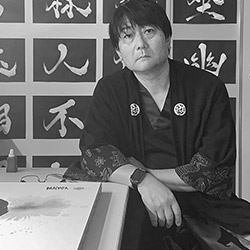
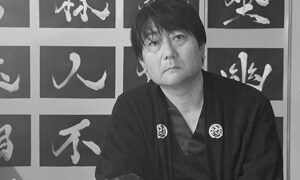
Behind the Scenes
Aikon was, for me, a moment of awakening.
As a calligrapher, ink and brush had always been as natural as breathing.
They were not tools but extensions of my life itself—
the ink, a liquid form of the soul; the brush, a conduit through which the spirit flows.
For years, I had never questioned this.
But one day, I realized something quietly unsettling:
the belief that “calligraphy must be done only with ink”
was itself a boundary that confined my freedom.
And then I remembered—before being a calligrapher, I was also a painter.
After the great earthquake, the meaning of “to live” changed within me.
Collapsed homes, a silent city, and the rubble illuminated by stars I had never seen before—
I walked through that breathless darkness with nothing but prayer to guide me.
The weight of what was lost, and the undeniable reality of what remained alive—
between those two extremes, I found something essential:
that “beauty” is not an aesthetic, but the force that allows us to endure.
That realization led my hand toward a new kind of expression.
When I first touched acrylic paint, I took a deep breath filled with both hesitation and curiosity.
It felt different from the cool gravity of ink—
softer, denser, and filled with light and air.
Its scent, its drying time, its flow—everything felt alive.
It was not a line of technique, but a line of breath.
It was not calligraphy in the traditional sense,
yet I could feel my heart clearly reflected in it.
The first colors I chose were white and blue.
White carried stillness; blue concealed a quiet prayer beneath its surface.
With the first stroke, I felt a silence within me begin to melt away.
Then came green—the cycle of life.
Purple followed as memory, and crimson as heartbeat.
As I let the colors drip and spread,
I could feel my own inner chaos beginning to reveal itself upon the canvas.
I realized then that “calligraphy is not about writing with ink,
but about reflecting the heart.”
To preserve tradition is noble,
but tradition should not be a fixed form—it must be a living flow.
After all, I have never walked the straight path of tradition.
For me, acrylic became not a departure from calligraphy,
but a new form of ink—one that could express prayer in another light.
As I painted, fragments of the earthquake returned without warning:
the roar of the waves, the scent of broken wood and earth,
the cold air before dawn, the white snow scattered on the ground.
And yet, even within those memories, there was a vivid sense of being alive.
That feeling deepened the blue, set the crimson aflame, and gave silence to the ink.
Through Hisseki-jutsu, the art of breathing through the brush,
I no longer felt that I was painting.
Rather, it was as if my hand moved on its own—guided by something unseen.
When the work was finished, I found both stillness and movement coexisting on the surface.
Blue prayed, green breathed, red pulsed.
Black ink enveloped everything, holding a quiet center.
It was as if light and shadow, death and life, past and present
were all sharing a single breath.
To me, Aikon is a place where love and soul meet again.
Love is not something to give; it is something that continues to flow.
The soul is not a shape, but a resonance.
When the two merge, what is born is a “form of prayer.”
I did not create this work to make a statement.
Rather, I wanted to let the “unspoken things” within my heart
slowly rise to the surface.
Love is deeper than language and wider than form.
Ink alone could not contain it.
That is why I turned to acrylic.
It was not a break from tradition,
but a return to the essence of expression—life itself.
When I set down the brush, I thought quietly to myself:
“This is not writing—it is breathing.”
After the earthquake, after pain, after silence,
I arrived at this one canvas.
And there I understood that “to live” and “to love”
are, in truth, the same act.
Aikon is the mark of that realization—
a record of prayer, of release, and of quiet hope.
In the place where ink and color merge,
where light and shadow meet,
I believe I have finally expressed what it means
to be alive in this moment.
Kanji meaning
The Meaning of the Characters “Ai” (Love) and “Kon” (Soul)
Ai (愛)– Love
In ancient script, the character “Ai” (愛) depicted a person offering their heart with both hands.
It represented not simply emotion, but an act of devotion — the movement of the heart reaching toward another.
Its structure reveals a poetic unity:
- “爫” – a hand extended in tenderness.
- “冖” – a gesture of covering and protecting.
- “心” – the heart, the spiritual core of being.
Together, these elements form a single concept:
to embrace another heart with one’s own.
Spiritually, Ai is an energy that flows outward.
It is not still; it moves, expands, and breathes.
Love, in this sense, is not possession — it is vibration, a current of warmth that connects all living things.
To write “Ai” in calligraphy is to let the inner light of the heart pass through the brush and reach the unseen.
It is not simply affection, but resonance — a prayer that transcends words.
In MADARA’s work, Love is not a sentiment;
it is “the breath of existence” — a living circulation that connects creation and life.
Kon (魂) – Soul
The character “Kon” (魂) is composed of two parts:
“云” meaning breath or voice, and “鬼” meaning spirit or unseen being.
In ancient cosmology, the human spirit was divided into two aspects:
- Kon – the dynamic soul that ascends to the heavens.
- Haku – the static soul that remains with the earth.
Thus, “Kon” signifies the living energy that moves between heaven and human life —
the pulse of existence that continues even beyond the body.
In essence, the soul has no fixed form, yet it is deeply felt.
It trembles, breathes, and transforms — like the movement of ink upon paper.
To depict “Kon” in calligraphy is to visualize the invisible vibration of life itself.
Through Hisseki-jutsu, the technique that embodies prayer within the stroke,
the brush becomes an instrument that channels the rhythm of the soul.
Philosophically, the soul is not confined within the individual.
It is a resonance that connects all beings —
a timeless breath that flows between past and future, death and life.
In MADARA’s art, Kon emerges from the memory of the earthquake and the act of rebirth.
It is not a ghost of the past, but a living pulse —
the quiet realization of being “kept alive.”
More Information
| table of contents | specification |
|---|---|
| The basis of the work | Wood Campus |
| Material | wood, Japanese paper |
| Size | A1 33.11in(841mm) × 23.39in(594mm)×0.98in(25mm) |
| Materials used | Sumi ink, acrylic paint |
| Finishing the work | The painting is made by pasting Japanese paper (calligraphy paper) onto a wooden canvas and mixing acrylic paint and Sumi ink. |
| Regarding domestic and international shipping | ・International shipping available: Ships via FedEx if no designated shipping company is specified. ・Domestic shipping in Japan: Ships via Yamato Transport if no designated shipping company is specified. |
| Packaging at time of shipment | We can also accommodate requests for packaging such as simple packaging and heavy-duty packaging, so please contact us for details. |
| Shipping | Decisions will be made in consultation with the buyer regarding whether to use transportation suitable for art works, whether to take out insurance, etc. |
| Compensation for works | The artwork will be delivered in the same condition as when it was sold. If you would like to purchase art insurance, we are happy to discuss this. |
| Payment Method | The payment amount is the artwork price plus shipping. Payment can be made by credit card. |

